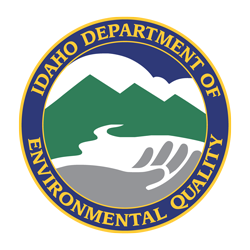Information provided on this page is for schools or child care facilities that are not public water systems but receive their drinking water from a public water system. Schools and some child care facilities that provide their own water are regulated public water systems and are required to test for lead and other contaminants. Visit the Public Water System Switchboard for more information.
Testing for lead is recommended, though not required, in schools and child care facilities that are not regulated as public water systems. The US Environmental Protection Agency (EPA) developed the 3Ts for Reducing Lead in Drinking Water Toolkit to help facilities implement voluntary testing programs.
This accordion will not appear on the screen
Through a grant from the Environmental Protection Agency, DEQ offers free sample analysis for lead in public schools and childcare facilities that are not regulated by public water systems. Tests are conducted through the Idaho Bureau of Labs (IBL), certified by EPA’s Drinking Water Office. Funds from this program will be available through June 30, 2026.
Visit the IBL website and complete a supply request to order sample containers. IBL will send the submittal paperwork with the sample containers. The same shipping container can be used to return the filled water bottles back to IBL. IBL will share the results with the facility and DEQ. DEQ will post results in the “Testing Results” section of this page and follow up with facilities as needed.
EPA recommends that facilities sample the first 250 milliliters (mL) of water from fountains and other outlets used for consumption after overnight stagnation. It is recommended that water is not dispensed by the faucet or fixture for between 8 and 18 hours before sampling. The recommended stagnation period is often met by taking the sample first thing in the morning, before the facility opens, and before the faucet or fixture has been used for any other purpose. This maximizes the likelihood that the highest concentrations of lead that users are likely to be exposed to from the fixture represented by the sample fountains should be taken out of service if the lead exceeds 15 parts per billion (ppb). After initial use, lead concentrations are usually significantly less; in many cases, not detected in samples.
Lead can enter drinking water from a building’s plumbing system, including lead solder, brass fixtures, water fountains, and lead or galvanized pipes. The amount of lead in drinking water depends on how corrosive the water is, the materials used to construct the plumbing fixtures, and how long the water has been in contact with lead in the pipes or fixtures. The longer water stands in the plumbing system, the more lead that has leached into it. For more information on lead in drinking water check out the quick links and resources below.
Exposure to lead is a significant health concern. Lead is a toxic metal that has no known safe level. All sources of lead in the environments of children should be effectively controlled or eliminated. Lead exposures are most dangerous when the human body is rapidly growing; therefore the most sensitive populations are pregnant women, bottle-fed babies, and children under the age of six.
Lead affects almost every organ and system in the body. The main target for lead toxicity is the nervous system, both in adults and children. The Center for Disease Control and Prevention (CDC) currently considers blood lead levels above 5 micrograms per deciliter (5 µg/dL) as “elevated”. Elevated blood lead levels in children are associated with lowered IQ, learning disabilities, poor classroom performance, hyperactivity, behavioral problems, impaired growth, and hearing loss.
Visit the Idaho Dept of Health & Welfare – Water Lead Levels: Health Risks in Perspective PDF.
Routine prevention measures, as well as interim and permanent lead removal solutions, can help prevent exposure to elevated levels of lead. Schools should work closely with maintenance staff and any plumbers who may make repairs. Beginning in 2016, the Idaho Division of Building Safety added water fountains as part of their routine inspections of public schools.
Routine Control Measures
- Clean faucet aerators regularly.
- Use only cold water for food and beverage preparation. Hot water will dissolve lead more quickly than cold water and is likely to contain increased lead levels.
- Instruct students and staff to run the water briefly before drinking.
- Run all indoor faucets and water fountains before students arrive each morning to remove stagnant water that may have been in contact with interior plumbing for extended periods of time.
Interim (Short-Term) Control Measures
If the initial sample results from a tap or fountain exceed 20 ppb, interim measures can be taken while you wait for follow-up test results or until a permanent solution has been put in place. In addition to the routine control measures listed above, consider providing bottled water and/or shutting off problem taps and/or fountains.
Permanent Remedies
If initial and follow-up sample results from a tap or fountain exceed 20 ppb, you should examine permanent options for lead reduction. Some examples include:
- Replace fixtures and pipes with new “lead-free” products.
- Add point-of-use filtration devices certified by NSF to remove lead.
- Check for grounding wires attached to water pipes. An electrical current may accelerate the corrosion of lead in piping materials.
- Reconfigure building plumbing to bypass sources of lead contamination.
- Add automatic flushing valves to reduce water stagnation.
In addition to testing for lead and remediating problems, a lead control program should also include a public information component. Any school conducting lead sampling will need to make the results publicly available due to the health effects of lead. DEQ will make the results of the tests public on their website. If any lead exposures are identified, you should also inform all parents, teachers, students, and employee organizations of the activities being pursued to correct the problems found.
Resources
This accordion will not appear on the screen
Grants and Loans Analyst

